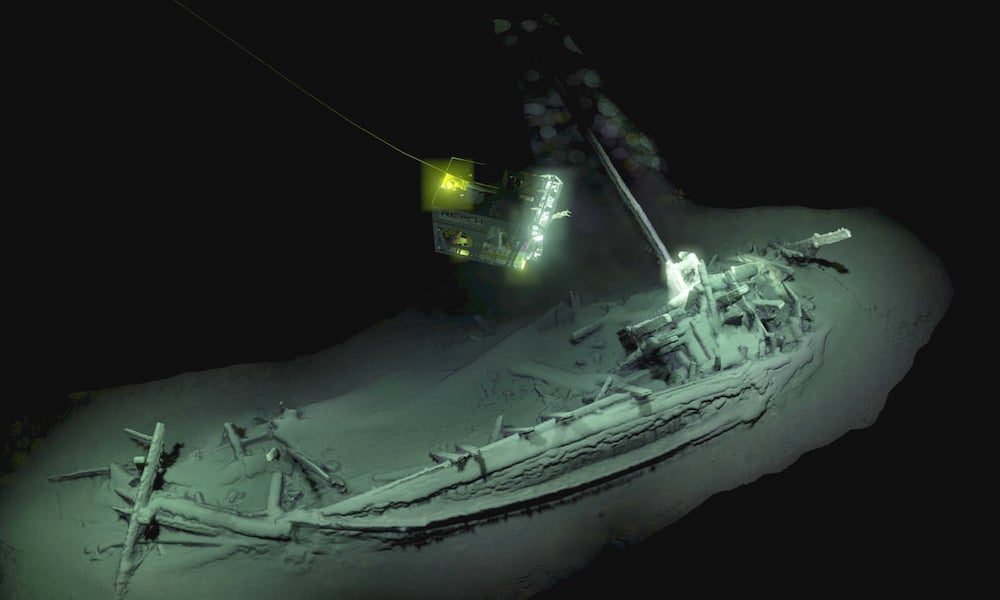Image: Black Sea Map
An international team scientists led by researchers from the University of Southampton in the UK have discovered the world’s oldest intact shipwreck lying in over a mile of water in the Black Sea.
The shipwreck was discovered in late 2017 as part of three year mapping expedition known as the Black Sea Maritime Archaeology Project, which surveyed over 1,200 sq miles of seabed in the Black Sea. Over 60 shipwrecks were discovered over the course of the project, varying in age from the 17th century back to Roman trading vessels.
The Project confirmed this week that this particular shipwreck, thought to be a Greek trading vessel, has now been carbon dated back to 400 B.C.
“A ship, surviving intact, from the Classical world, lying in over 2km of water, is something I would never have believed possible,” said University of Southampton Professor Jon Adams, the Black Sea MAP’s principal investigator. “This will change our understanding of shipbuilding and seafaring in the ancient world.”
The ship lies in over 1.2mi (2km) of water deep in the Black Sea where the water is anoxic (oxygen free), which can preserve organic material for thousands of years. A small piece of the vessel has been carbon dated and has now been confirmed as the oldest intact shipwreck known to mankind.
Related: Underwater Archaeology Expedition Uncovers Dozens of Ancient Shipwrecks in Black Sea
The Black Sea MAP team is under the leadership of the University of Southampton and Professor Jon Adams, Professor Lyudmil Vagalinsky of the National Institute of Archaeology with Museum of the Bulgarian Academy of Sciences and Dr. Kalin Dimitrov of the Center of Underwater Archaeology in Sozopol, Bulgaria.
It set out in 2015 to investigate the changes in the ancient environment of the region off the coast of Bulgaria, including the impact of sea-level change following the last glacial cycle.
In addition to the discovery of the shipwrecks, the scientists excavated the remains of an early Bronze Age settlement at Ropotamo in Bulgaria, near what was the ancient shoreline when the sea level was much lower. As the waters rose, the settlement was abandoned and now the remains of house timbers, hearths and ceramics lie 2.5 meters below the seabed.

 Join The Club
Join The Club











